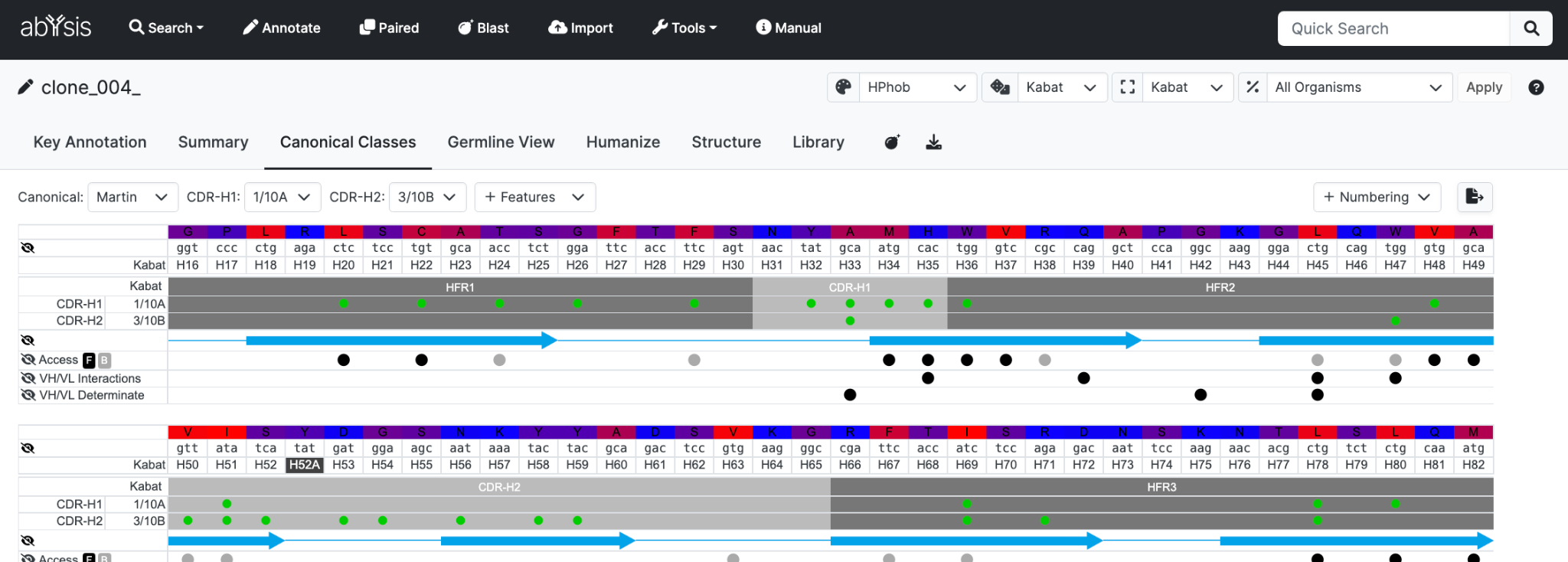-
Overview
-
Sequence Input
-
Database Search
-
Multiple Alignment
-
Key Annotation
-
Structure Input
-
Paired
-
Tools
-
Miscellaneous
-
Statistics
-
Licence File
Canonical Classes
This tab presents 3D structural information in 2D.

In addition to those already described in the Summary Tab you will see;
- Predicted CDRs and the residues present to make that prediction (the structural determinants). Structurally important positions are represented by a circle. If the residue matches the permitted residues for the chosen Canonical Schemeit will be green. If not it is red.
- Secondary Structure; shown as blue arrows.
- Accessibility (Access); divided into four broad classifications; Fully Buried (F) , Buried (B), Intermediate (I) and Exposed (E).
- Residues that often play a role in VH/VL structure Interactions and Determinants are similarly highlighted.
To change the CDR scheme select the Canonical dropdown. To add features select the Features dropdown.
To hide rows, click the ‘eye’ icon. To only remove a subset such as accessibility click on an icon as shown below:

CDR Definition Methods
Martin
The default option. Based on templates derived automatically from available crystal structures; see Martin and Thornton, J. Mol. Biol. 263(1996),800-815).
Canonical class identifiers comprise Chothia class, a cluster number for loop length and a letter to describe the individual cluster. Where there is no equivalent Chothia class, '?' appears (e.g. for CDR-H1, there are classes ?/10C and ?/10D).
(This was previously called Auto but was changed from v4.0 to improve understanding)
Strict
Strict application of templates derived from an aggregation of papers by Chothia et al.
Relaxed
Key residues are based on Chothia templates (Whitelegg N & Rees AR, Protein Eng. 13(2000),819-24 and Methods Mol. Biol. 248(2004),51-91). Classes are expanded from the Chothia definitions: some additional residues have been allowed together with some additional required residues and extra classes.
Classes with * in the name are not defined by Chothia. Modifications and references are detailed for each class.
(This was previously called AbM but was changed from v4.0 to improve understanding)
